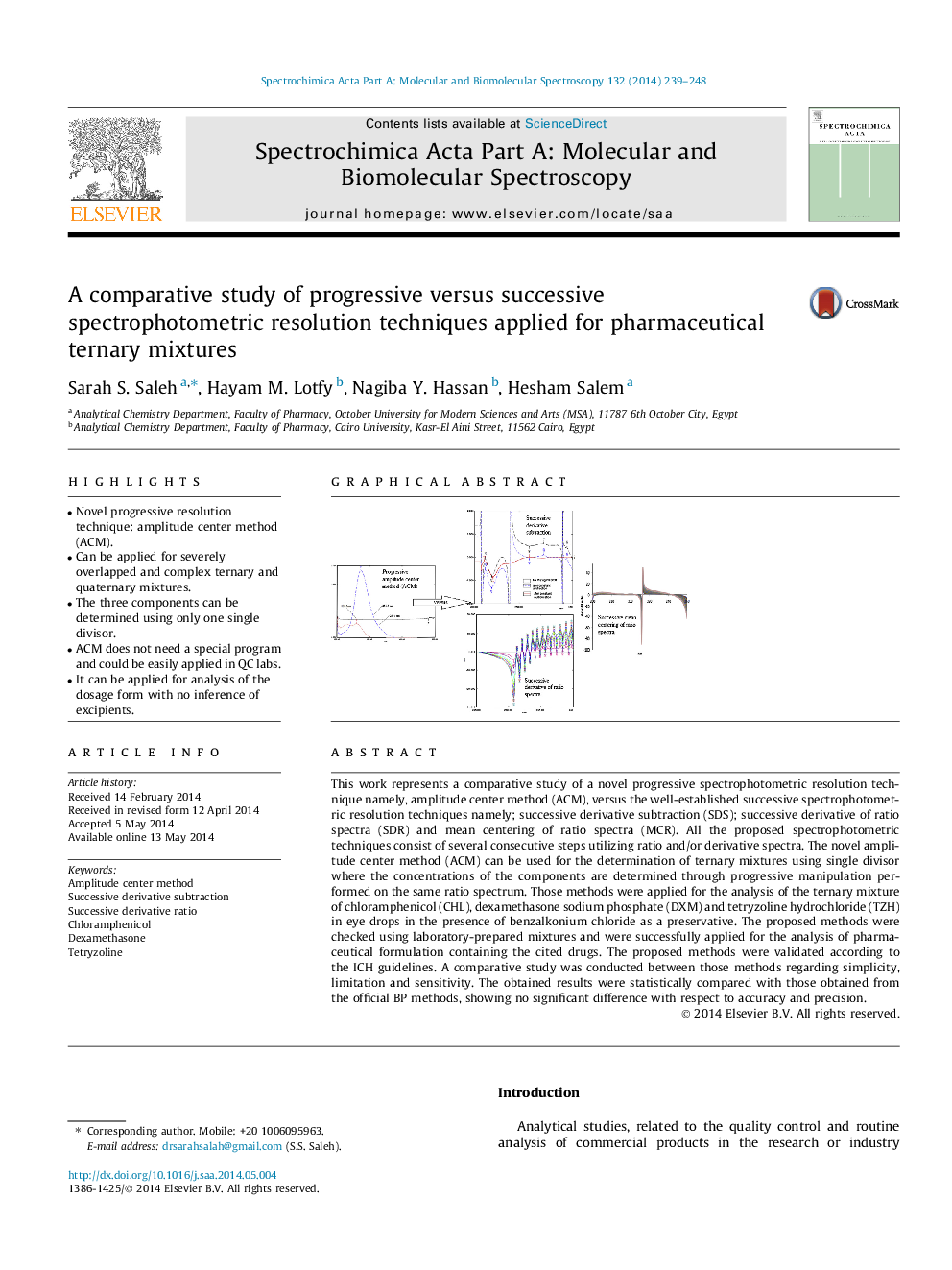| Article ID | Journal | Published Year | Pages | File Type |
|---|---|---|---|---|
| 1229580 | Spectrochimica Acta Part A: Molecular and Biomolecular Spectroscopy | 2014 | 10 Pages |
•Novel progressive resolution technique: amplitude center method (ACM).•Can be applied for severely overlapped and complex ternary and quaternary mixtures.•The three components can be determined using only one single divisor.•ACM does not need a special program and could be easily applied in QC labs.•It can be applied for analysis of the dosage form with no inference of excipients.
This work represents a comparative study of a novel progressive spectrophotometric resolution technique namely, amplitude center method (ACM), versus the well-established successive spectrophotometric resolution techniques namely; successive derivative subtraction (SDS); successive derivative of ratio spectra (SDR) and mean centering of ratio spectra (MCR). All the proposed spectrophotometric techniques consist of several consecutive steps utilizing ratio and/or derivative spectra. The novel amplitude center method (ACM) can be used for the determination of ternary mixtures using single divisor where the concentrations of the components are determined through progressive manipulation performed on the same ratio spectrum. Those methods were applied for the analysis of the ternary mixture of chloramphenicol (CHL), dexamethasone sodium phosphate (DXM) and tetryzoline hydrochloride (TZH) in eye drops in the presence of benzalkonium chloride as a preservative. The proposed methods were checked using laboratory-prepared mixtures and were successfully applied for the analysis of pharmaceutical formulation containing the cited drugs. The proposed methods were validated according to the ICH guidelines. A comparative study was conducted between those methods regarding simplicity, limitation and sensitivity. The obtained results were statistically compared with those obtained from the official BP methods, showing no significant difference with respect to accuracy and precision.
Graphical abstractFigure optionsDownload full-size imageDownload as PowerPoint slide
